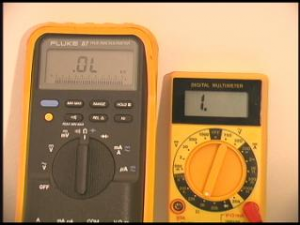
Whether or not you can hear each sound shows whether or not you can hear high-pitched or low-pitched sounds, quiet or loud sounds, and whether your left or right ear has hearing loss.ĭuring some hearing tests, you may also be asked to listen to speech at different volumes, which will be played into one ear at a time. Most adults who get hearing tests are asked to wear earphones and listen to short tones that are played at different volumes and pitches into one ear at a time.

The whole process should take about 30 minutes, and it’s painless.

Isolation makes people more likely to become depressed, unless they get help for their hearing loss. Learn more about the different types of hearing loss tests and what you can expect from each. They might even stop seeing their friends or family as often because they’re embarrassed that they can’t hear well. Older adults who don’t do anything to address their hearing loss are more likely to feel left out of social events that they’d normally enjoy, because they can’t hear what’s happening. Problems with hearing that run in the family.There are many causes of hearing loss in adults: That’s why it’s important to have your ears checked when your doctor says you should, even if you think you’re fine. You may not realize that you have hearing loss, because it’s often a gradual process.
#Whats a audiotest tv#
They have trouble hearing people talk to them when they’re in a crowded room, or they’ve been told they raise the volume on the TV way too high.īut not all people know that they have a problem. Some people may suspect that they have hearing loss. This is why your doctor will want to test your hearing every few years, rather than just once as an adult.Įxperts recommend that adults get their hearing tested every 10 years until age 50, and then every 3 years after that. About 14% of people ages 45 to 64 have some degree of hearing loss, but that rises to more than 30% among people who are 65 or older. With age, hearing loss becomes more likely. Hearing tests are how doctors use to make sure that your ears work well. To find an audiologist near you, visit ProFind.Every now and then, your doctor may ask you to get a hearing test. You have a hearing loss if the Xs and Os are farther down the graph. If the Xs and Os are at the top of the graph, your hearing is normal. What you hear in your left ear gets a blue X. The audiologist marks what you hear in your right ear with a red O. If you have hearing loss at all pitches, you might have problems hearing any speech. In this case, you might hear speech, but it would not sound clear. For example, your hearing might be normal for low pitches but not for high pitches. It also shows how severe it is, called the degree of hearing loss. The audiogram shows the pattern of your hearing loss. Lines at the bottom of the chart are for loud sounds.Įxamples of soft sounds are a clock ticking, a person whispering, and leaves rustling.Įxamples of loud sounds are a lawnmower, a car horn, and a rock concert. Lines at the top of the chart are for soft sounds.

The frequencies tested are 125 Hz, 250 Hz, 500 Hz, 1000 Hz, 2000 Hz, 3000Hz, 4000 Hz, and 8000 Hz.Įxamples of "low-frequency" sounds are a rumble of thunder, a tuba, and sounds like the "oo" in "who."Įxamples of "high-frequency" sounds are a bird chirping, a whistle, and the "s" sound in "sun." Loudness or IntensityĮach line from top to bottom shows how loud the sound is in decibels, or dB. The lowest pitches are on the left side and the highest pitches are on the right side.

Pitch or FrequencyĮach line that runs from left to right shows a frequency in Hertz, or Hz. At the end of testing, the audiogram will show what you heard. The audiologist will make a note of how loud the sound was at each frequency. When you hear a sound during a hearing test, you raise your hand or push a button. The audiogram shows the type, degree, and configuration of hearing loss. It will show how loud sounds need to be at different frequencies for you to hear them. The audiogram is a graph showing the results of a pure-tone hearing test. When you have a hearing test, the audiologist will complete an audiogram.


 0 kommentar(er)
0 kommentar(er)
